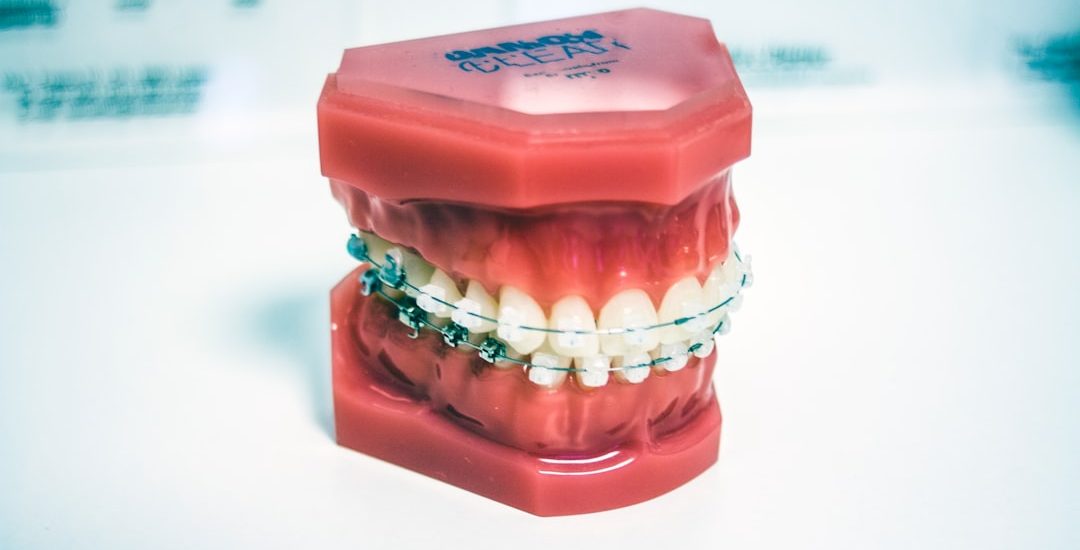Silver braces, also known as traditional metal braces, have been a popular choice for orthodontic treatment for many years. They are made of high-grade stainless steel and are the most common type of braces used by orthodontists. Silver braces consist of brackets that are bonded to the teeth and connected by an archwire, which applies gentle pressure to gradually move the teeth into the desired position. This type of braces is suitable for patients of all ages and is effective in treating a wide range of orthodontic issues, including crooked teeth, overcrowding, misaligned bites, and more.
Silver braces are a reliable and cost-effective option for achieving a straighter and healthier smile. They have a long track record of success and are known for their durability and effectiveness in correcting dental misalignments. While there are other types of braces available, such as ceramic braces or clear aligners, silver braces remain a popular choice due to their affordability and proven results. With advancements in orthodontic technology, silver braces have become more comfortable and less noticeable than they were in the past, making them a practical and efficient option for orthodontic treatment.
Key Takeaways
- Silver braces are a popular orthodontic treatment option for straightening teeth and correcting bite issues.
- The benefits of choosing silver braces include their durability, affordability, and effectiveness in treating various orthodontic issues.
- Silver braces stand out for their versatility, as they can be customized with colored elastics and are suitable for patients of all ages.
- Caring for your silver braces involves maintaining good oral hygiene, avoiding certain foods, and attending regular orthodontic appointments.
- The process of getting silver braces involves a consultation with an orthodontist, the placement of the braces, and regular adjustments to achieve the desired results.
- Frequently asked questions about silver braces include inquiries about discomfort, treatment duration, and dietary restrictions.
- Embracing your smile with silver braces can lead to improved confidence and a healthier, more aligned smile.
The Benefits of Choosing Silver Braces
There are several benefits to choosing silver braces for orthodontic treatment. One of the main advantages is their affordability. Silver braces are typically more budget-friendly compared to other orthodontic options, making them accessible to a wider range of patients. Additionally, silver braces are known for their durability and reliability. They are made of high-quality stainless steel, which makes them resistant to staining and discoloration, ensuring that they maintain their appearance throughout the treatment process.
Another benefit of silver braces is their effectiveness in treating various orthodontic issues. Whether it’s correcting crooked teeth, closing gaps, or aligning the bite, silver braces can address a wide range of dental misalignments. They are also suitable for patients of all ages, making them a versatile option for orthodontic treatment. Furthermore, silver braces are easy to maintain and require minimal adjustments during the treatment process, making them a convenient choice for both patients and orthodontists.
How Silver Braces Stand Out
Silver braces stand out for several reasons, including their durability and effectiveness in correcting dental misalignments. Unlike other types of braces, such as ceramic or clear aligners, silver braces are made of high-grade stainless steel, making them resistant to staining and discoloration. This ensures that they maintain their appearance throughout the treatment process, providing patients with a reliable and long-lasting orthodontic solution.
In addition to their durability, silver braces are known for their versatility in treating various orthodontic issues. Whether it’s addressing crooked teeth, overcrowding, or misaligned bites, silver braces can effectively correct a wide range of dental misalignments. They are also suitable for patients of all ages, making them a practical option for individuals seeking orthodontic treatment. Furthermore, silver braces have evolved with advancements in orthodontic technology, becoming more comfortable and less noticeable than they were in the past. This makes them a popular choice for patients who want a discreet yet effective orthodontic solution.
Caring for Your Silver Braces
| Topic | Information |
|---|---|
| Cleaning | Brush your braces and teeth after every meal to remove food particles and prevent plaque buildup. |
| Diet | Avoid hard, sticky, or chewy foods that can damage your braces. Cut fruits and vegetables into small pieces. |
| Regular Check-ups | Visit your orthodontist regularly for adjustments and to ensure your braces are in good condition. |
| Discomfort | It’s normal to feel some discomfort when you first get your braces or after adjustments. Use orthodontic wax to alleviate any irritation. |
Proper care and maintenance of silver braces are essential for ensuring successful orthodontic treatment. It’s important to follow the orthodontist’s instructions and maintain good oral hygiene to keep the braces clean and free from plaque buildup. Regular brushing and flossing are crucial for preventing tooth decay and gum disease while wearing braces. Using a fluoride toothpaste and mouthwash can also help strengthen the teeth and prevent cavities.
It’s also important to avoid certain foods that can damage the braces, such as hard or sticky foods that can cause brackets to break or wires to bend. Patients should also be mindful of their eating habits and avoid biting into hard objects or using their teeth to open packages. Additionally, regular visits to the orthodontist for adjustments and check-ups are necessary to ensure that the braces are working effectively and that the treatment is progressing as planned.
The Process of Getting Silver Braces
The process of getting silver braces typically begins with a consultation with an orthodontist to assess the patient’s dental needs and determine the best course of treatment. During this initial visit, the orthodontist will conduct a thorough examination of the teeth and jaws, take X-rays and impressions, and discuss the treatment options available. Once the decision to proceed with silver braces is made, the next step involves preparing the teeth for the placement of the braces.
The placement of silver braces involves bonding the brackets to the teeth using a special adhesive and then connecting them with an archwire. This process is typically painless and takes about 1-2 hours to complete. After the braces are in place, the orthodontist will provide instructions on how to care for them and schedule regular follow-up appointments for adjustments and monitoring progress. The length of time needed to wear silver braces varies depending on the individual’s orthodontic needs, but most treatments typically last between 18-24 months.
Frequently Asked Questions about Silver Braces

1. Are silver braces noticeable?
Yes, silver braces are noticeable due to their metal brackets and wires. However, advancements in orthodontic technology have made them more discreet and less noticeable than they were in the past.
2. Are silver braces painful?
Patients may experience some discomfort or soreness after getting silver braces or after adjustments. However, this discomfort is usually temporary and can be managed with over-the-counter pain medication.
3. Can I still play sports with silver braces?
Yes, patients can still participate in sports while wearing silver braces. However, it’s important to wear a mouthguard to protect the braces and teeth from injury during physical activity.
4. How often do I need to visit the orthodontist for adjustments?
Patients typically need to visit the orthodontist every 4-6 weeks for adjustments and check-ups during the course of their treatment with silver braces.
Embracing Your Smile with Silver Braces
Embracing your smile with silver braces is an important part of the orthodontic journey. While it may take some time to adjust to wearing braces, it’s essential to focus on the positive aspects of treatment and look forward to achieving a straighter and healthier smile. Many patients find that wearing silver braces boosts their confidence and self-esteem as they progress through their orthodontic treatment.
It’s also important to remember that wearing silver braces is only temporary and that the end result will be well worth it. Once the treatment is complete, patients can enjoy a beautiful smile that will last a lifetime. Embracing your smile with silver braces means taking pride in your commitment to improving your dental health and overall well-being. It’s an opportunity to embrace change and look forward to a brighter future with a confident and radiant smile.
FAQs
What are silver braces?
Silver braces are orthodontic appliances used to straighten and align teeth. They are made of metal brackets and wires that are attached to the teeth to gradually move them into the desired position.
How do silver braces work?
Silver braces work by applying continuous pressure on the teeth, which gradually shifts them into the correct alignment. The orthodontist adjusts the braces periodically to ensure the teeth are moving as planned.
Are silver braces noticeable?
Silver braces are noticeable, as the metal brackets and wires are visible on the teeth. However, advancements in orthodontic technology have made the brackets smaller and less noticeable than in the past.
How long do you have to wear silver braces?
The length of time a person needs to wear silver braces varies depending on the individual’s orthodontic needs. On average, treatment with braces can last anywhere from 18 months to 3 years.
Do silver braces require special care?
Yes, wearing silver braces requires special care. Patients need to maintain good oral hygiene by brushing and flossing regularly, and they may need to avoid certain foods that can damage the braces.
Are silver braces more affordable than other types of braces?
Silver braces are often more affordable than other types of braces, such as ceramic or clear aligners. However, the cost of braces can vary depending on the individual’s orthodontic needs and the specific treatment plan.





